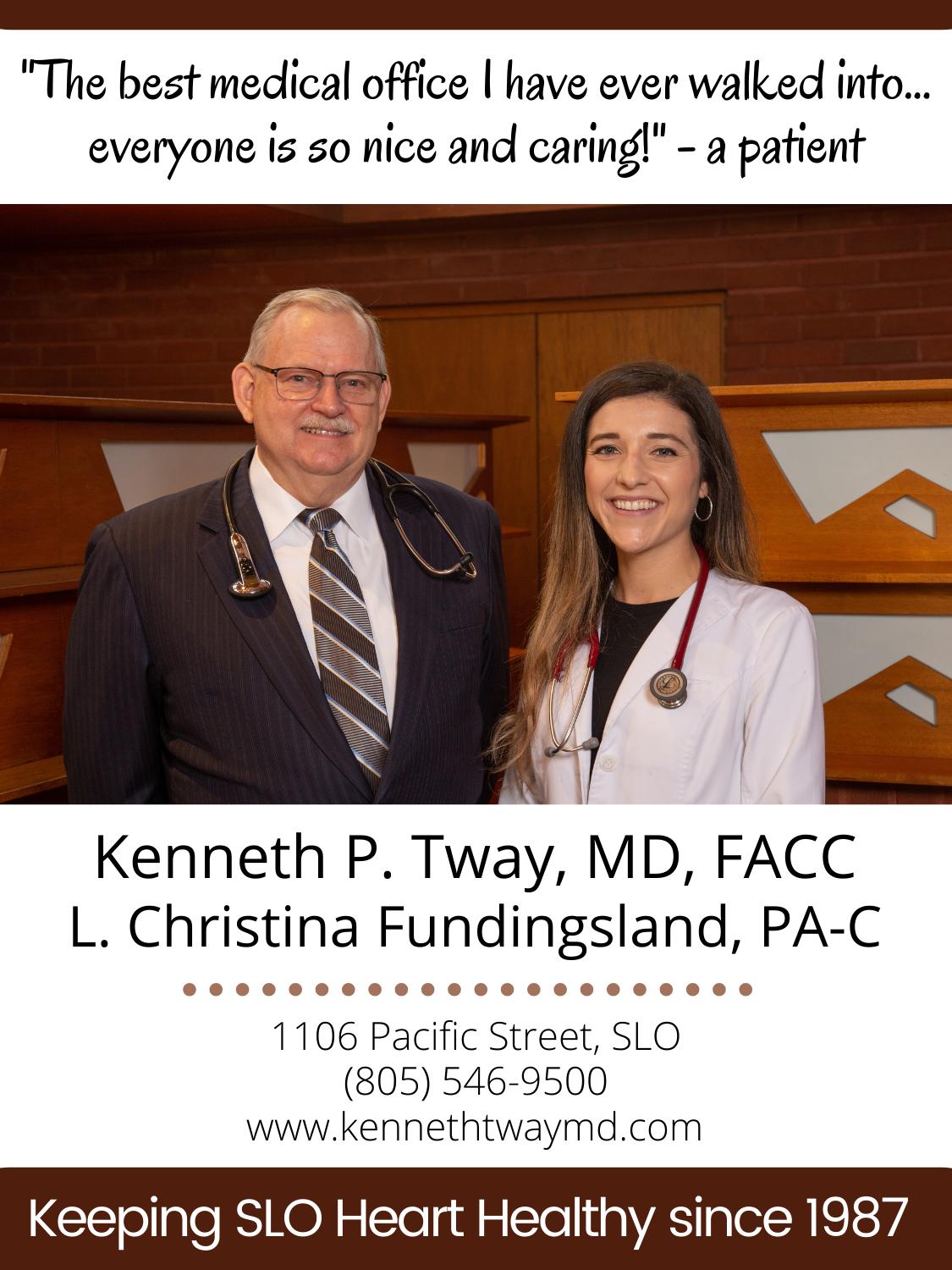
3 minute read
VitA min D
Are you getting enough?
BY PAULA MCCAMBRIDGE
You’re climbing Valencia Peak in Montaña de Oro State Park in Los Osos, the ocean view expanding with each step upward. The sun warms your bones and glistens your skin as its life-affirming ultraviolet rays soak into your body activating the production of Vitamin D.
Vitamin D is essential for bone health, muscle contraction, and nerve conduction, which is the strength of signals transmitted by nerves. Studies suggest that Vitamin D promotes insulin sensitivity, positively affecting blood sugar control. And if that’s not enough, it also aids immune function, cardiovascular health, hormone balancing, and mood, according to Lisa Dawes, a registered dietician nutritionist and nutrition therapist in Arroyo Grande.
With 287 sunny days each year—that’s nearly three more months than the national average—life on California’s Central Coast is full of sunshine found on hiking trails, beaches, or simply relaxing on a patio sipping tea.
So, then, why did an Orange County study, with nearly as many sunny days as San Luis Obispo County, conclude that 19.2 percent of residents suffered from low Vitamin D?
And why did University of California Irvine researcher Dr. Samar Singh report that half of her Southern California patients are low in Vitamin D?
Sherry Elliston, registered dietitian and a nutrition lecturer at Cal Poly shared some possible reasons when she said:
“Since Vitamin D is absorbed in the upper gastrointestinal tract, an individual with resection of the G.I.—as in patients who have undergone gastric bypass—will have issues with absorption,” she
>> said. “Kidney and liver diseases can cause issues with absorption as well as Ulcerative Colitis and Crohn’s disease. The underlying issue with these disease states is fat malabsorption. If fat absorption is compromised, the fat-soluble vitamins will be malabsorbed as well.”

Other possible reasons for limited absorption, according to Elliston:
• Wearing sunscreen
• Wearing full-coverage clothing when in the sun
• Individuals with darker skin tend to have lower blood levels of Vitamin D due to the pigment (melanin) that acts as a shade
• Lactose intolerance
• A vegan diet
The good news is, there are ways to increase Vitamin D that do not rely solely on sunlight.
“I always take a food-first approach—you cannot out-supplement a poor diet,” Dawes said. “You can’t go wrong with a diet rich in whole and unprocessed foods like colorful vegetables and fruits, lean and clean proteins, beans, legumes, unprocessed grains, nuts, seeds, and heart-healthy fats and oils like olive oil and avocado oil. These foods can help increase Vitamin D and magnesium intake and circulating blood levels.”
Elliston made further points about strong sources of the vitamin, sun being the primary source, food second, and supplements as a third choice.
“Vitamin D is obtained through the sun, this is the primary natural source,” Elliston said. “Limited foods have naturally occurring Vitamin D. It can be found in fatty fish, cheese, mushrooms, and egg yolks. Due to issues of deficiency in children (which can lead to a disease called rickets), many dairy products and cereals are fortified with Vitamin D. When an individual is struggling with obtaining enough Vitamin D via sunlight and dietary intake, supplementation is required.”
No one questions whether whole food is a source of overall health. “Let food be thy medicine, and let medicine be thy food,” a quote often attributed to the Greek physician Hippocrates. But if food alone doesn’t work then supplements may be the answer.

“If supplementation is warranted despite healthy nutrition shifts, I highly recommend evaluating 25-hydroxy Vitamin D with a blood test prior to supplementation,” Dawes said. “This test should be retested after the individual has been supplementing with D2 or D3 for two to three months to evaluate the efficacy of the supplementation. I typically recommend a Vitamin D supplement that includes Vitamin K2 and a magnesium supplement if the diet is lacking.”
She said that, for supplements, the recommended intake of Vitamin D in adults is fifteen micrograms per day. Since Vitamin D is a fat-soluble vitamin, it is best absorbed in the bloodstream when it is paired with foods high in fat. This is a good tip for individuals who continually find themselves low in Vitamin D.
If Vitamin D deficiency is a concern in a sunshine-filled state like California, you can bet that other locations are facing the challenge, too. The Cleveland Clinic reports that about one billion people worldwide have a Vitamin D deficiency, while fifty percent of the population has Vitamin D insufficiency.
Approximately thirty-five percent of adults in the United States have Vitamin D deficiency.
Symptoms of Vitamin D deficiency include fatigue, impaired immune function, muscle pain, and bone pain.
For anyone exhibiting signs of Vitamin D deficiency, it is recommended that you contact a health professional for testing and to discuss a treatment plan. SLO LIFE
















